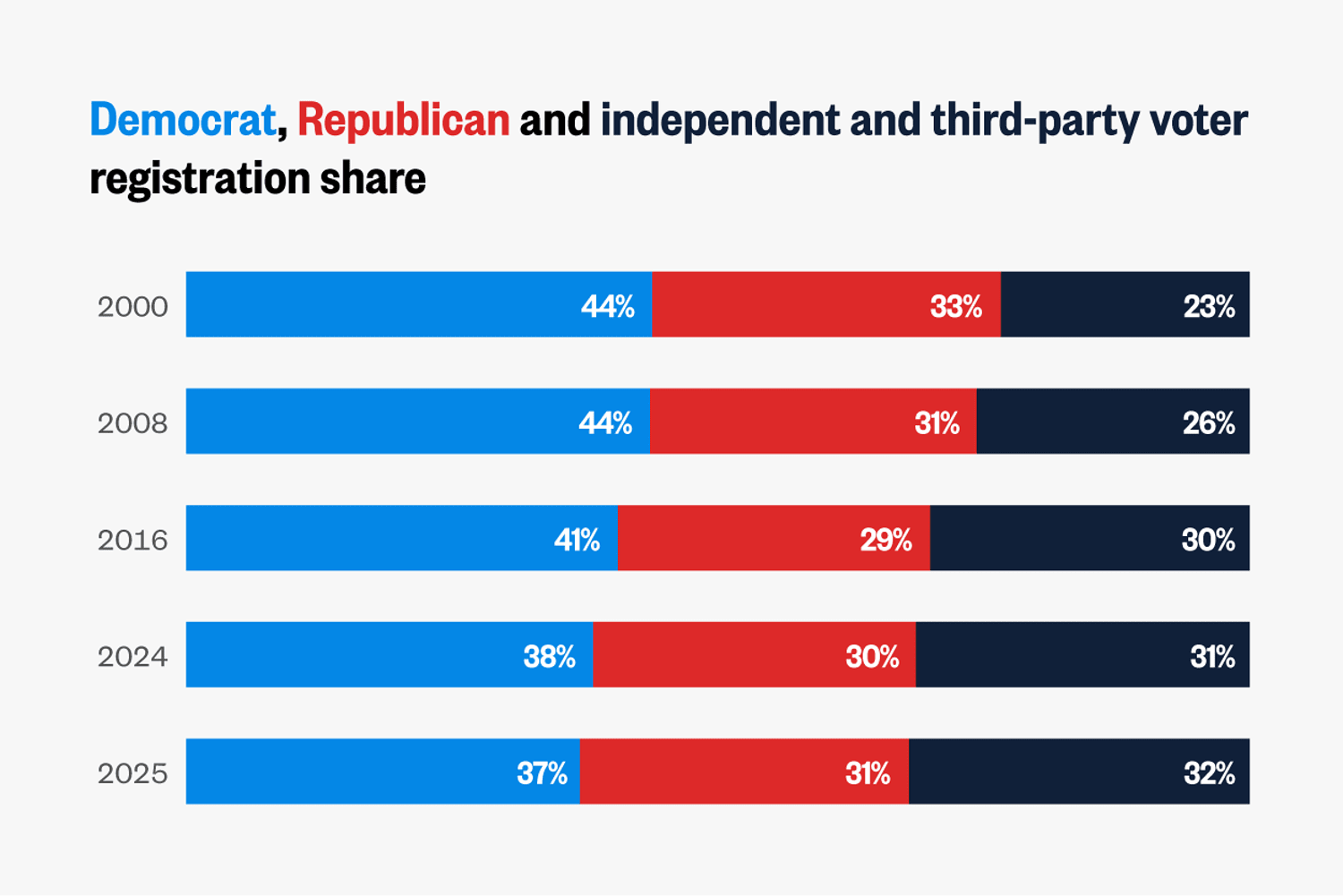Data shows Democratic voter registrations slipping, Republicans ticking down as independent and third-party expands


The partisan affiliation data, compiled by Ballotpedia, is available for the 33 states, territories and districts that publish registration data by voter party affiliation.
But the trend is also reflected in broader national exit polls. The 2024 election polls showed that for the first time, self-identified independents outnumbered Democrats and were equal with Republicans.
Mary Ann Marsh, a political analyst in Massachusetts, said independent and third-party registrations are growing in number because of dissatisfaction with the major parties.
“I think people are just disappointed in politics and disappointed in party politics. And I think we’re seeing it now,” Marsh said, pointing to June’s nationwide “No Kings” protests as a sign that people can organize without a major party. “People are taking matters into their own hands.”
The analysis shows the increase in the share of independents has come at the cost of the Democratic Party. Except during former President Barack Obama’s 2008 election, the share of registered voters made up by registered Democrats has declined every year since 2000 across the jurisdictions with data.
The decline has accelerated in recent years, as the party’s share of the registered voters in jurisdictions with available data fell 1.2 percentage points from 2024 to 2025, among the largest one-year decreases since 1998. Republicans’ voter share has also declined overall, although it has increased since 2021.


